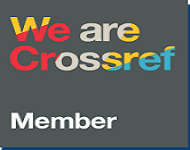Applying Digital Mind Mapping to Support Student Career Planning: The Coggle Approach at SMK GIKI 1 Surabaya
DOI:
https://doi.org/10.33394/jpu.v6i4.18197Keywords:
Mind Mapping, Coggle, IGROW, TrainingAbstract
This community service program aimed to enhance students’ ability to develop independent career plans by applying the mind mapping technique through the Coggle application. The program employed a coaching approach utilizing the IGROW model, which consists of five key components: Intention, Goal, Reality, Options, and Will/Way Forward. The participants of this training were students from SMK GIKI 1. To ensure a systematic and practical coaching process, the IGROW model was implemented throughout the sessions. The results showed that the training effectively equipped students with the ability to visualize and plan their careers systematically, including mapping their interests, further education goals, and required skills. Evaluation findings indicated a significant improvement in students’ understanding of career planning, as evidenced by the difference between pre-test and post-test scores. Therefore, this training was proven effective in helping students prepare for their future careers in a more structured and potential-oriented manner.
References
Alabi, M. (2024). Visual learning: The power of visual aids and multimedia. Journal of Educational Technology, 15(4), 123–135.
Anderson, & Krathwohl. (2001). A Taxonomy for Learning, Teaching, and Assessing: A Revision of Bloom’s Taxonomy of Educational Objectives.
Bahrin, S., Rahman, K., & Andriana, N. (2024). Upaya Bimbingan Karir Untuk Meningkatkan Kesiapan Karir Pada Siswa Kelas Ix Di Mts Ar-Rozaaq Bogor. 1, 1, 52–57. https://ejournal.uinib.ac.id/jurnal/index.php/attaujih/
Holtshousen. (2015). Common factors supporting the matching between coach and coachee. Essential Mentoring Skills, 1–4.
Hotmauli, M. (2022). Implementasi Teori Ginzberg Dalam Bimbingan Konseling Karir: Literature Review. Jurnal Cahaya Mandalika, 3(2). http://ojs.cahayamandalika.com/index.php/JCM
Hurlock, E. (2003). Psikologi Perkembangan.
Jumrotul, O., Nim, A., Bimbingan, J., Konseling, D., Fakultas, I., & Dan, D. (2023). Strategi Guru Bimbingan Dan Konseling Dalam Meningkatkan Perencanaan Karir Siswa Kelas Xii Di Sma Nwdi Sukarar
Kioupi, V., & Voulvoulis, N. (2019). Education for sustainable development: A systemic framework for connecting the SDGs to educational outcomes. Sustainability (Switzerland), 11(21). https://doi.org/10.3390/su11216104
Liu, N., & Jew, L. (2023). The Impact of Social Capital on Career Adaptability in the Era of Artificial Intelligence: The Mediating Role of Career Choice. Journal of Logistics, Informatics and Service Science, 10(3), 166–179. https://doi.org/10.33168/JLISS.2023.0313
Nurhasanah, Fajriani, & Wilda, N. (2016). Peta pikiran untuk meningkatakan perencanaan karir. 1, 1, 36–46.
Rahayu, P. P. (2022). Perencanaan Karir Di Masa Pandemi Covid-19 Bagi Siswa Kelas Xii Sma Negeri 5 Semarang. Communnity Development Journal, 3(1), 106–110.
Saavedra, Anna Rosefsky, & Opfer, V. Darleen. (2012). Learning 21st-Century Skills Requires 21st-Century Teaching. Phi Delta Kappan, 94(2), 8–13. https://doi.org/10.1177/003172171209400203
Schunk, D. H. (1964). Learning theories and education. In Psychology in the Schools (Vol. 1, Issue 3). https://doi.org/10.1002/1520-6807(196407)1:3<334::aid-pits2310010324>3.0.co;2-9
Shen, Q. (2022). The Importance of Integrating Career Planning Education into High School Curriculum. Proceedings of the 2021 4th International Conference on Humanities Education and Social Sciences (ICHESS 2021), 615(Ichess), 2115–2120. https://doi.org/10.2991/assehr.k.211220.364
Downloads
Published
How to Cite
Issue
Section
Citation Check
License
Copyright (c) 2025 The Author(s)

This work is licensed under a Creative Commons Attribution-ShareAlike 4.0 International License.
Authors who publish with this journal agree to the following terms:
- Authors retain copyright and grant the journal right of first publication with the work simultaneously licensed under a Creative Commons Attribution License (CC BY-SA 4.0) that allows others to share the work with an acknowledgment of the work's authorship and initial publication in this journal.
- Authors are able to enter into separate, additional contractual arrangements for the non-exclusive distribution of the journal's published version of the work (e.g., post it to an institutional repository or publish it in a book), with an acknowledgment of its initial publication in this journal.
- Authors are permitted and encouraged to post their work online (e.g., in institutional repositories or on their website) prior to and during the submission process, as it can lead to productive exchanges, as well as earlier and greater citation of published work (See The Effect of Open Access).





